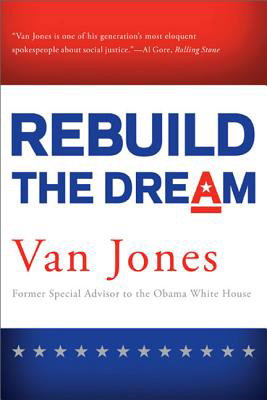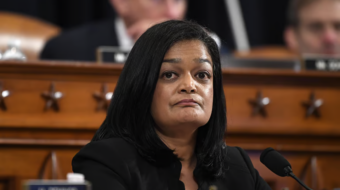
In September 2009, Van Jones stepped down as Special Advisor for Green Jobs, Enterprise, and Innovation at the White House Council on Environmental Quality under a barrage of right-wing criticism of his youthful flirtation with leftist politics. While Jones briefly recounts the events surrounding his resignation in the introduction to his new book, Rebuild the Dream, its main purpose is to present Jones’ take on the last 12 years of American politics as well as some suggestions on what activists can do to address some of our most pressing economic and political problems.
Jones’ analysis of Obama’s 2008 election victory is straightforward: Various grassroots groups – particularly the anti-war movement – that developed during George W. Bush’s two terms in office found a welcoming and tech savvy ally in the Obama campaign. However, after the election, the liberal grassroots fell into disarray: some activists took Obama’s election to be the sole object of their hard work (ignoring the new challenge of holding Obama to his campaign promises), while others became disillusioned by the actions of Obama the President and gave up altogether.
But he points out that the lessons of the 2008 election weren’t lost on the conservative activists who went on to form the tea party movement. In fact, the tea partiers were so successful that they managed to force Democrats to defend spending on safety-net programs like Medicaid and Social Security in the middle of a recession.
In his view, the only counter-force to the influence of the tea party has been the equally spontaneous – and successful – Occupy Wall Street. Though Jones clearly sympathizes with the Occupy movements, he believes that the only way they can solidify their rhetorical victories is to get as comfortable within the corridors of power as they are without.
Anyone to the left of the liberal catchall category of “progressive” will find Jones’ analysis wanting. In Rebuild the Dream, Jones joins other contemporary political figures in seeking an ideology-free politics powerful enough to unite people of all walks of life in the mission to achieve some moderately liberal objectives. But the call for a post-political politics is usually a sign that the caller is in ideological agreement with neoliberal economic and social policy.
For example, Jones sees the recession as the result of a few bad apple capitalists (“the worst of the 1%”) who gamed the system and believes that kinder, gentler capitalism – with its worst impulses constrained by regulation – will pull the U.S. out of the economic crisis and into prosperity.
He also believes the Occupy movement’s anti-capitalist rhetoric “falls short in a lot of ways” and argues that “a movement that defines itself as the 99% against the 1% cannot succeed in America. But a movement that defines itself as the 99% for the 100% cannot fail.”
But even those readers who agree with Jones’ viewpoint may find Rebuild the Dream wanting in substance. Stylistically, the text suffers from its use of buzzwords interspersed with generalizations which feign profound insight – like a TED speech or Malcolm Gladwell article. Furthermore, Jones simply tries to cover too many ideas in too short a time to delve into any one of them deeply.
In the end, Rebuild the Dream is more a survey of Jones’ opinions than a useful analysis of American politics.
Rebuild the Dream
By Van Jones
2012, Nation Books
Hardcover, 320 pages, also in Kindle edition.










